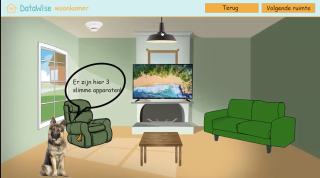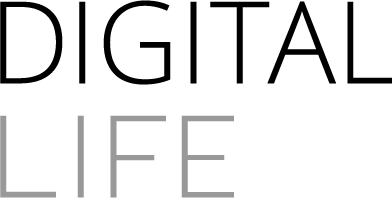Data aware with students!
09-04-2021

Smart technology and data systems are increasingly entering our digital society. Dr Marije Kanis of Digital Life and Manon den Dunnen of the Dutch Police focus on threats and benefits. How do you ensure that people become aware of the data they share, and that a fair assessment can be made here? How do we make the consequences and considerations transparent, and how do we motivate people to make critical and conscious choices?
One of the major challenges in responsible data sharing is making people aware of data dilemmas. In the Digital Trust Infrastructure project, we tackle this jointly - also together with students.
Data and information can be shared in various situations. Think, for example, in the context of an aging population, in which people continue to live independently at home for longer and more often. For people who are afraid of lying on the ground unnoticed for a few days after a fall, there are solutions whereby loved ones can keep an eye on things with a camera, for example. In addition, data is now often shared. The question is whether this is really necessary for this specific purpose. An alternative is, for example, a motion sensor that does not share data. Only under previously agreed, specific conditions, such as no movement in the kitchen and bathroom at 11 a.m., can a text message be sent to the caregiver to check. The question is how to make people critically conscious of these kinds of considerations, without unnecessarily scaring people with the privacy card. Now they can possibly see when you have visitors and whether you might be breaking the lock down rules…. Public values such as data minimization are key here. With whom, what, why and how to share data is something that one should be able to consciously and critically consider in different situations: how do you approach this?
We gave this assignment to five groups of students who took part in the UX design course at the UvA. Last week, the results were presented, sharing interesting insights, such as with regard to:
- Inclusion and participation: How do you present the dilemmas in a low-threshold and accessible way that also matches the context of the use case and target group (such as with an audio button, a lot of visuals, conscious use of color ...)
- Neutrality: How do you avoid pushing people in a certain direction (respecting autonomy). And how do you ensure that they can take control themselves?
- Critical reflection: Encouraging different behavior with the intent of dilemmas and questions
- Fun data awareness and oil slick effect: Make it fun to share and discuss data dilemmas with others. For example, there was a group of students who specifically focused on children aged 6-8 to motivate them to ask in-depth questions at home. They had created a very nice interactive leducational program, in which a young dog led them past various smart devices in the house and games.
Interestingly, the students had chosen different target groups and had also interviewed them and involved them in the testing. As a result, not only was valuable knowledge acquired, but information was also immediately provided.
We are incorporating the results within the Digital Trust Infrastructure project. With special thanks to all students for your efforts and ideas!

